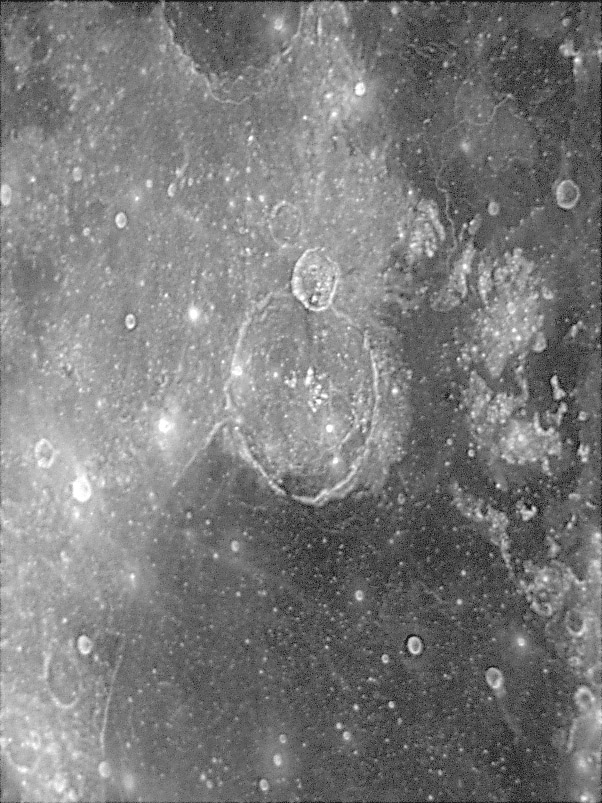image by Rainer Ehlert, Mexico City
Has Rainier discovered a new way to detect delicate rilles? Following the interest stemming from his recent high Sun view - or nonview - of Clavius, he has gone back through some of his other full Moon images and unearthed this one of the northern Mare Humorum region. The thing that immediately jumped out to me and some people who commented on the Yahoo Lunar Observers group was the conspicuousness of the Y-shaped Herigonius Rilles in the top-right of the image. Herigonius is the crater close to the right edge of the upper third of the image. The rille system is narrow and has been infrequently imaged by terrestrial telescopes. But in this high resolution image even the tiny elliptical source pits at its upper ends are easy to see. The high Sun also shows the contrast in reflectivity of the high and low titanium basalts in the Herigonius region. The dark mare material in northern Humorum and in the region of the rille is hi-titanium basalt, and the lighter hued material just below Herigonius and in the well-defined oval that the one rille segment cuts is older, low-titanium basalt. The high Sun view also allows easy detection of some large dark-halo craters. Gassendi J, the bright crater with a dark ring near the middle-right side of the image, has excavated town though lighter hued material to bring up darker mare rock. It will be very interesting to see high resolution views of other difficult to image rilles. Candidates include the rilles that cut through the Marius Hills, the Sharp Rille, and the rilles near Delisle.
Technical Details:
Left: Nov 5, 2006. Takahashi Mewlon 250S @ 3000mm focal length + Lumenra Infinity 2-2M; capture software LuCam Recorder Pro v1.7, RegiStax v4 and Photoshop CS2. Multipoint alignment.
Related Links:
Rükl plates 41 & 52
Rainer’s website
Yesterday's LPOD: A Basin to Study
Tomorrow's LPOD: Happy Thanksgiving!
COMMENTS?
Register, Log in, and join in the comments.




